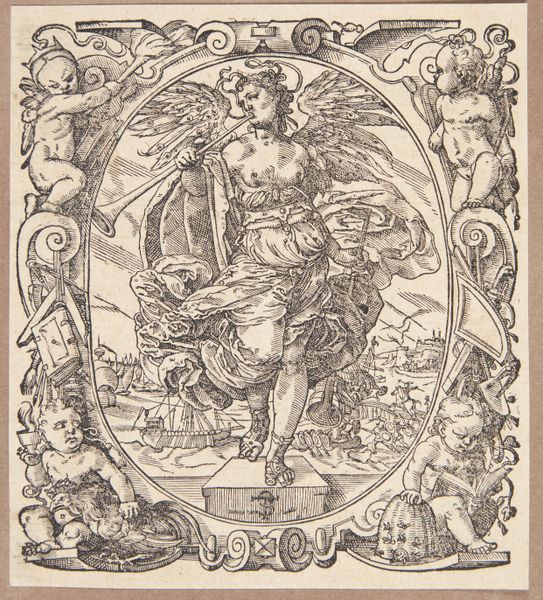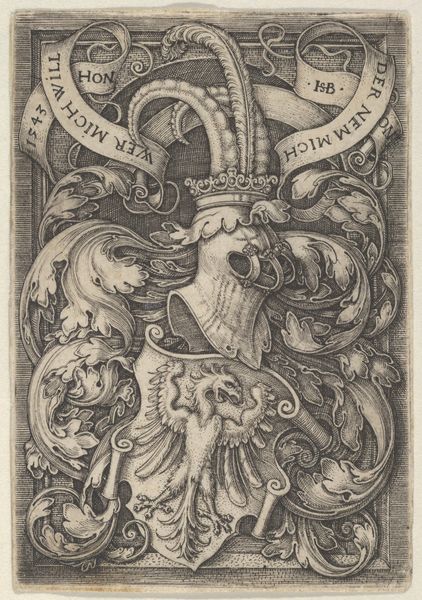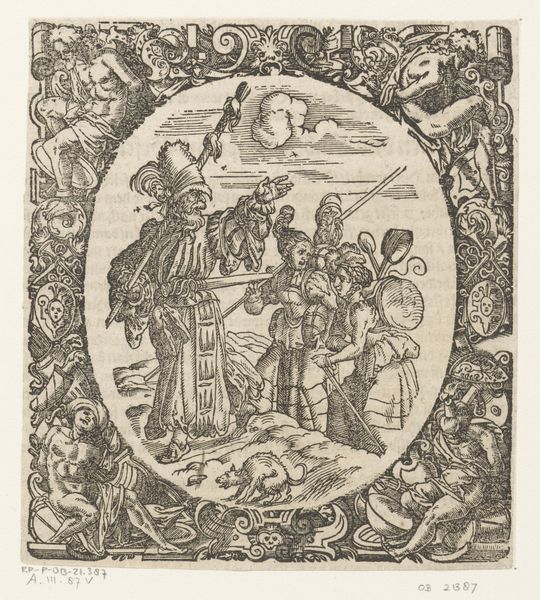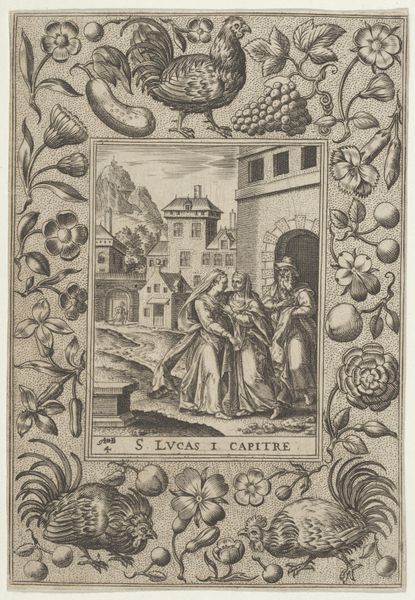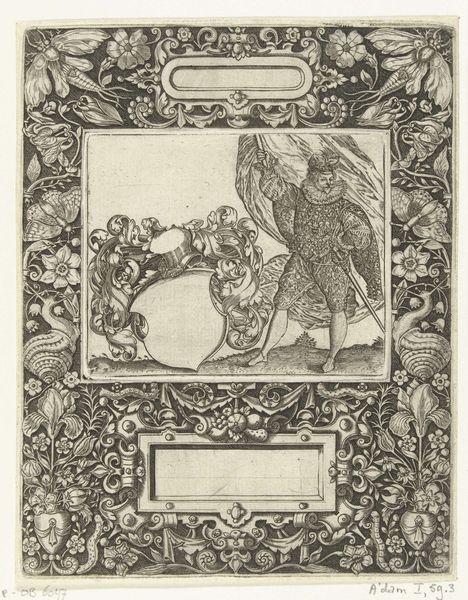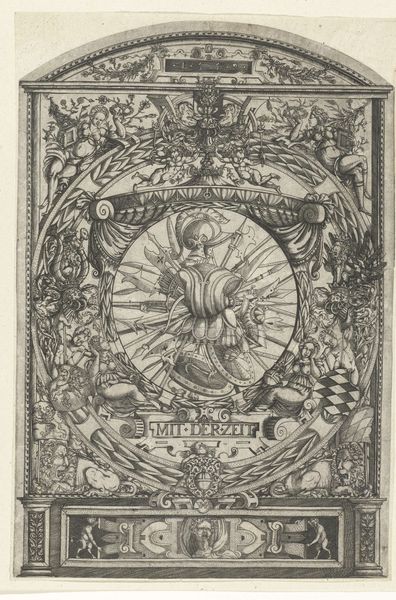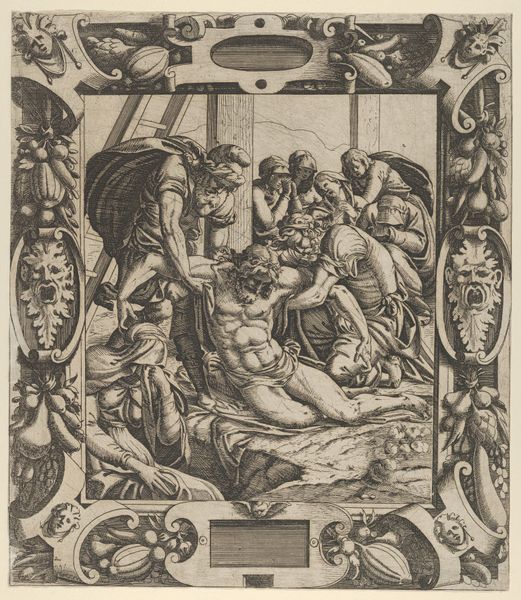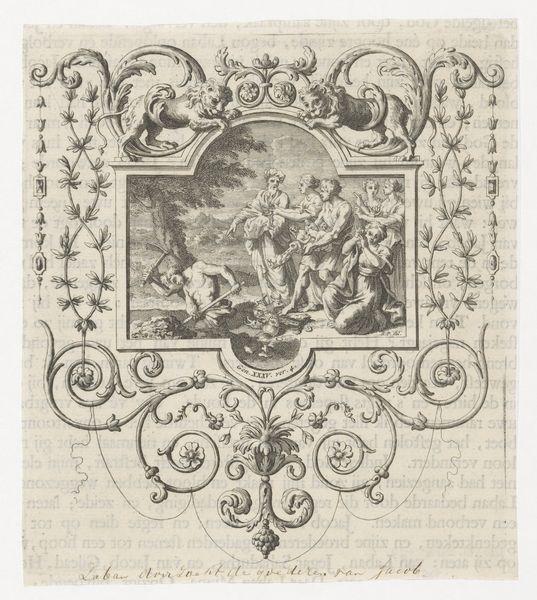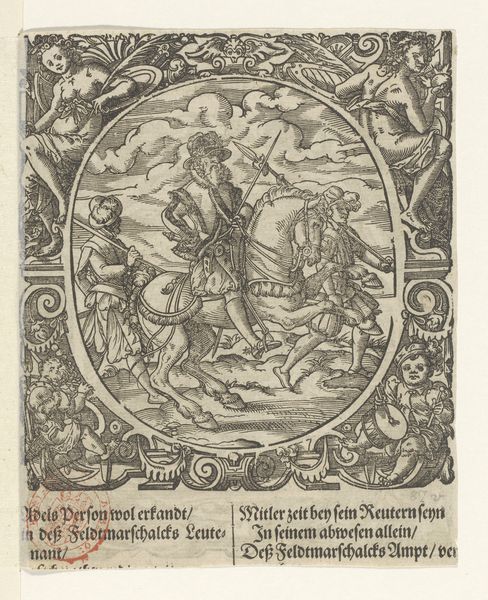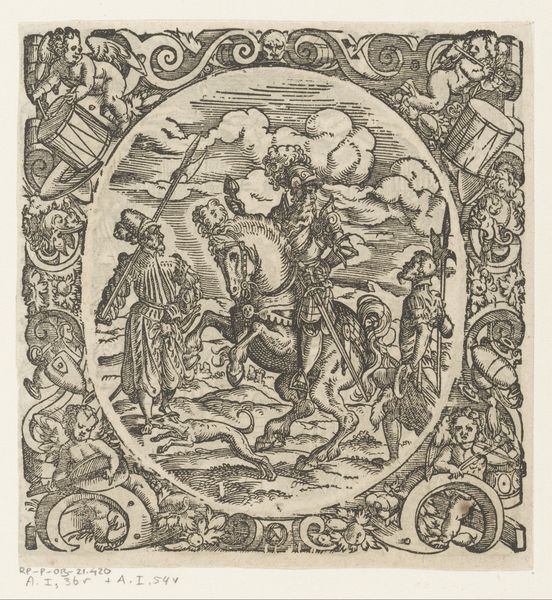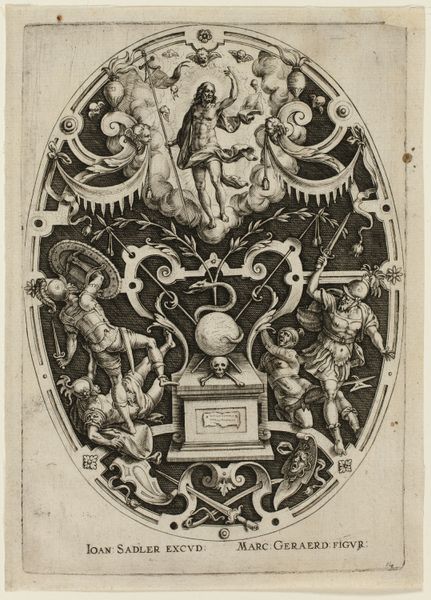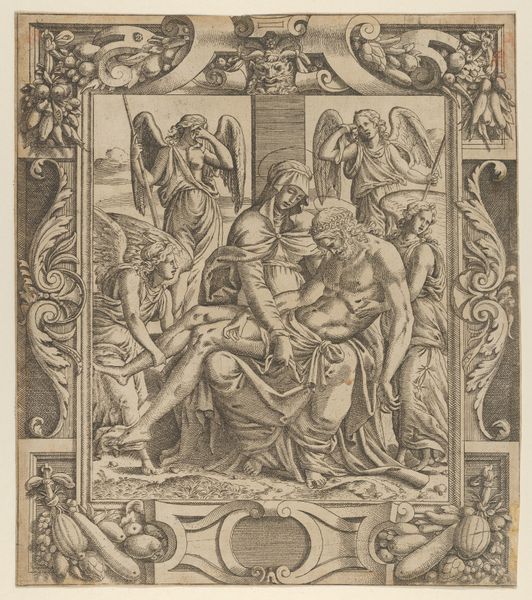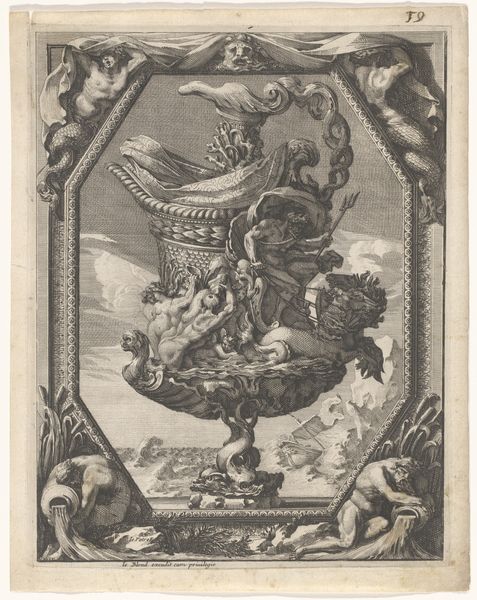
drawing, print, engraving
#
drawing
#
narrative-art
#
pen drawing
# print
#
figuration
#
11_renaissance
#
history-painting
#
northern-renaissance
#
engraving
Dimensions: Sheet: 4 15/16 × 3 7/16 in. (12.6 × 8.7 cm)
Copyright: Public Domain
Curator: Abraham de Bruyn created this engraving titled "The Annunciation to the Shepherds" sometime between 1580 and 1600. It’s currently held at the Metropolitan Museum of Art. Editor: What strikes me immediately is the overwhelming density of imagery. It feels incredibly rich and complex, even before considering the story being depicted. It’s busy, almost claustrophobic, yet also undeniably beautiful. Curator: It’s exemplary of the Northern Renaissance style. Notice how the central image depicting the angel's appearance is bordered by an incredibly detailed frame filled with fruits, flowers, and animals. It shows a real interest in naturalism. The entire composition teems with life, reflecting, perhaps, the abundance and promise of the scene itself. Editor: Yes, the symbolism here is very overt. We have peacocks which for centuries have signaled renewal and immortality due to the classical myth that their flesh does not decay. What a visual treat! Curator: The placement of “S. Lucas II Chapitre” at the bottom centers this artwork on Luke’s Gospel, Chapter 2. But, given the potential association between the peacock, which for Christians has come to represent resurrection, along with fruits like strawberries often considered a Christian symbol, are these bordering elements solely ornamental or deeply integral to how the story of Luke is being represented? Editor: That's an interesting consideration. The frame, far from being just decoration, becomes another layer of interpretation. Think about the sheer novelty of the message that the birth of the shepherd signifies - and the importance, therefore, in a showy, detailed expression. But let us consider for a moment - for what specific social group do these engravings cater to? Who had access to them at the time? Curator: Printmaking offered more accessible avenues for biblical education. However, remember this image exists within a cultural milieu increasingly dominated by theological disputes. So the choices Bruyn made in depicting this pivotal biblical event should be considered within that broader religious and political context. What narrative nuances, then, did the engraving potentially introduce to period viewers? Editor: So by using common natural objects - the fruits, flowers, and fowl surrounding the frame - it could indicate the promise inherent in religious dogma. And these kinds of objects aren't often the kind depicted in finer forms of Renaissance painting, or commissioned artworks from this time. Fascinating! Curator: Indeed. Reflecting on De Bruyn's "Annunciation," its enduring value stems from the beautiful synthesis of symbolism and socio-political commentary in this detailed engraving. Editor: Agreed. It's a reminder that visual storytelling is always a negotiation between artistic intent and cultural understanding.
Comments
No comments
Be the first to comment and join the conversation on the ultimate creative platform.
